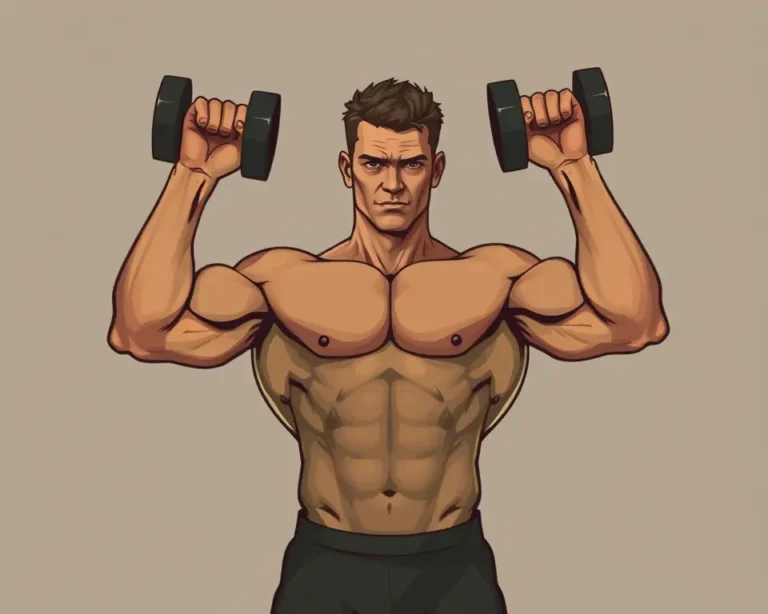Jeff Cavaliere, a renowned strength and conditioning coach, has outlined what he considers the “perfect” shoulder routine. Cavaliere’s approach focuses on comprehensive shoulder development by targeting all three heads of the deltoid muscle: anterior, lateral, and posterior. His routine also emphasizes injury prevention and proper form, making it suitable for both beginners and experienced lifters.
Understanding the Shoulder Anatomy for Optimal Training
Before diving into the routine, Cavaliere stresses the importance of understanding shoulder anatomy. The deltoid muscle is composed of three heads:
- Anterior Deltoid: Responsible for shoulder flexion and internal rotation.
- Lateral Deltoid: Responsible for shoulder abduction (raising the arm away from the body).
- Posterior Deltoid: Responsible for shoulder extension and external rotation.
A well-rounded shoulder routine should target all three heads to ensure balanced development and prevent imbalances that can lead to injury.
Cavaliere’s ‘Perfect’ Shoulder Routine: Exercises and Techniques
Cavaliere’s routine includes a selection of exercises designed to hit each deltoid head effectively. He also emphasizes the importance of proper form and controlled movements to maximize muscle activation and minimize the risk of injury.
1. Warm-up: Scapular Activation
Cavaliere always starts with a warm-up that focuses on scapular activation. This helps to improve shoulder mobility and stability, preparing the muscles for the workout ahead.
- Scapular Retractions: Squeeze your shoulder blades together, holding for a second, and repeat for 10-15 reps.
- Scapular Protraction: Push your shoulder blades apart, rounding your upper back, and repeat for 10-15 reps.
- Scapular Upward Rotation: Shrug your shoulders upward, lifting your shoulder blades, and repeat for 10-15 reps.
- Scapular Downward Rotation: Depress your shoulders downward, pulling your shoulder blades down, and repeat for 10-15 reps.
2. Compound Exercise: Overhead Press
The overhead press is a fundamental compound exercise that works all three deltoid heads, as well as the trapezius and triceps.
- Technique: Stand with your feet shoulder-width apart, holding a barbell or dumbbells at shoulder height. Press the weight overhead, fully extending your arms. Lower the weight back to the starting position in a controlled manner.
- Sets and Reps: 3 sets of 6-8 reps.
- Cavaliere’s Tips: Maintain a stable core and avoid arching your back excessively. Focus on pushing the weight straight up, rather than forward.
3. Anterior Deltoid Exercise: Front Raises
Front raises isolate the anterior deltoid, helping to build size and strength in the front of the shoulder.
- Technique: Stand with your feet shoulder-width apart, holding dumbbells in front of your thighs. Raise one arm in front of you, keeping it straight, until it reaches shoulder height. Lower the weight back to the starting position in a controlled manner.
- Sets and Reps: 3 sets of 10-12 reps per arm.
- Cavaliere’s Tips: Avoid using momentum to swing the weight up. Focus on using your anterior deltoid to lift the weight.
4. Lateral Deltoid Exercise: Lateral Raises
Lateral raises target the lateral deltoid, responsible for shoulder width and a capped appearance.
- Technique: Stand with your feet shoulder-width apart, holding dumbbells at your sides. Raise your arms out to the sides, keeping them straight, until they reach shoulder height. Lower the weight back to the starting position in a controlled manner.
- Sets and Reps: 3 sets of 10-12 reps.
- Cavaliere’s Tips: Avoid shrugging your shoulders as you lift the weight. Focus on using your lateral deltoid to lift the weight. Cavaliere recommends performing a slight lean to allow for a greater range of motion.
5. Posterior Deltoid Exercise: Face Pulls
Face pulls are a great exercise for targeting the posterior deltoid and improving shoulder health. They also help to strengthen the rotator cuff muscles, which are important for shoulder stability.
- Technique: Attach a rope to a cable machine and set the pulley at face height. Stand facing the machine and pull the rope towards your face, separating your hands as you pull. Focus on squeezing your shoulder blades together.
- Sets and Reps: 3 sets of 12-15 reps.
- Cavaliere’s Tips: Keep your elbows high and avoid shrugging your shoulders. Focus on using your posterior deltoid and rotator cuff muscles to pull the rope.
6. Rotator Cuff Exercise: External Rotations
External rotations are crucial for maintaining shoulder health and preventing injuries. They strengthen the rotator cuff muscles, which help to stabilize the shoulder joint.
- Technique: Lie on your side with your upper arm supported and elbow bent at 90 degrees. Hold a light dumbbell in your hand. Rotate your forearm upwards, keeping your elbow close to your body. Lower the weight back to the starting position in a controlled manner.
- Sets and Reps: 3 sets of 15-20 reps per arm.
- Cavaliere’s Tips: Use a light weight and focus on proper form. Avoid using momentum to swing the weight.
Importance of Proper Form and Progressive Overload
Cavaliere emphasizes the importance of proper form in all exercises. Using proper form ensures that you are targeting the correct muscles and minimizing the risk of injury.
He also stresses the importance of progressive overload. This means gradually increasing the weight, reps, or sets over time to continue challenging your muscles and promoting growth.
Adjusting the Routine for Individual Needs
Cavaliere notes that this routine is a general guideline and may need to be adjusted based on individual needs and goals. Beginners may want to start with lighter weights and fewer sets, while experienced lifters may want to use heavier weights and more sets.
He also suggests varying the exercises and rep ranges to keep the muscles challenged and prevent plateaus.







